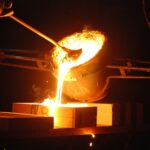Welding is a precise and demanding trade that requires not just skill but also well-maintained equipment.
Neglecting proper care of your welding tools can lead to reduced performance, costly repairs, and even safety hazards. This guide walks you through practical tips and actionable steps to ensure your welding equipment remains functional and effective for years to come.
Why Equipment Maintenance Matters
If you use welding machines regularly, you already know that precision and efficiency are non-negotiable. Poorly maintained equipment can lead to inaccurate welds, reduced productivity, and even machine breakdowns that cost you time and money.
Routine maintenance extends the life of your welding tools, ensures consistent performance, and minimizes unexpected downtimes.
Failing to maintain your equipment not only impacts your work but also puts you or your team at unnecessary risk. Malfunctioning equipment can overheat or misfire, leading to accidents in the workspace. Regular upkeep ensures both safety and reliability.
Tips for Maintaining Welding Equipment
To get the best performance and the longest lifespan from your welding tools, follow these essential tips:
Inspect Your Equipment Regularly
Regular inspections are the foundation of welding equipment maintenance. These checks help you identify and fix small problems before they become significant issues. Here’s what to look for:
- Electrical Cables and Connections
Examine all power cords and connections for wear, cracks, or exposed wires. Damaged cables can result in inefficient power delivery or even dangerous electrical hazards.
- Nozzles and Contact Tips
These components are critical for smooth and accurate welds. Clean them regularly to avoid spatter buildup, which can clog the nozzle and reduce arc consistency.
- Gas Hoses
Check for leaks or damage to hoses, as these can cause inefficiencies in gas delivery and compromise welding quality.
Clean After Every Use
Welding is a messy business, with spatter, dust, and residue accumulating quickly. Cleaning your tools immediately after use can prevent long-term damage.
- Use a Wire Brush
Clean the workpiece and electrodes with a wire brush to get rid of residues that can contaminate future welds.
- Remove Slag
If you’re using arc welding, remove slag buildup regularly to ensure high-quality welding results.
- Keep Vents Clear
Dust in ventilation systems can lead to overheating. Use compressed air to blow out vents and keep them clog-free.
Maintain Consumables
Consumables such as electrodes, filler materials, and contact tips play a crucial role in the welding process. Proper care ensures they remain effective and prolong their lifespan.
- Store Properly
Keep your consumables dry and away from moisture to avoid rust and contamination.
- Rotate Stock
Use older consumables first to avoid piling up outdated, unused materials.
Long-Term Longevity Tips for Welding Tools
Besides daily care and cleaning, there are additional steps you can take to extend the life of your welding equipment over the long term.
Calibrate Your Machine
Incorrect settings can ruin your welding efforts and strain your machine unnecessarily. Calibrate your equipment periodically to ensure optimal performance. For precision, consider professional calibration services at least once a year.
Replace Parts Proactively
Don’t wait for a part to fail before replacing it. Proactive replacements reduce the risk of downtime. Keep an inventory of essential spare parts like contact tips, nozzles, and gas diffusers.
Check the Cooling System
Overheating is a common problem in welding machines. Check the cooling system and coolant levels regularly. Ensure fans are functioning correctly and clear any obstructions that might block airflow.
Store Equipment Correctly
Improper storage can damage welding tools and shorten their lifespan. Always store your equipment in a dry, dust-free environment. Use covers to protect welding machines and tools when not in use.
Common Mistakes to Avoid in Welding Tools Care
Even experienced welders sometimes make these mistakes when it comes to maintaining their equipment:
- Skipping Inspections
Never ignore small faults. Tiny issues often escalate into bigger, costlier problems if left unaddressed.
- Using Damaged Cables
Operating tools with frayed or damaged cables is both inefficient and dangerous.
- Overlooking the User Manual
Manufacturers often include specific maintenance tips in the user manual. Failing to follow these guidelines can void your warranty or cause avoidable issues.
Benefits of Proper Welding Equipment Maintenance
Investing time in maintaining your welding tools means fewer disruptions to your work. Proper care also ensures:
- Consistent Weld Quality
Clean and calibrated tools result in accurate, visually appealing welds of high quality.
- Cost Savings
Prevention is cheaper than repair. Maintaining your equipment avoids costly repairs or replacements in the long run.
- Enhanced Tool Lifespan
Routine maintenance ensures your tools perform at their peak for years.
- Improved Safety
Fully functional equipment with no issues minimizes safety risks, protecting you and your team.
Take Control of Your Welding Equipment Maintenance
Maintaining welding equipment doesn’t have to be complicated. By conducting regular inspections, cleaning diligently, and following these longevity tips, you can keep your tools in prime condition and optimize your welding performance.
If you’re looking for more industrial tips or want expert product recommendations, explore this website for more resources. Your equipment deserves to work as hard as you do.




